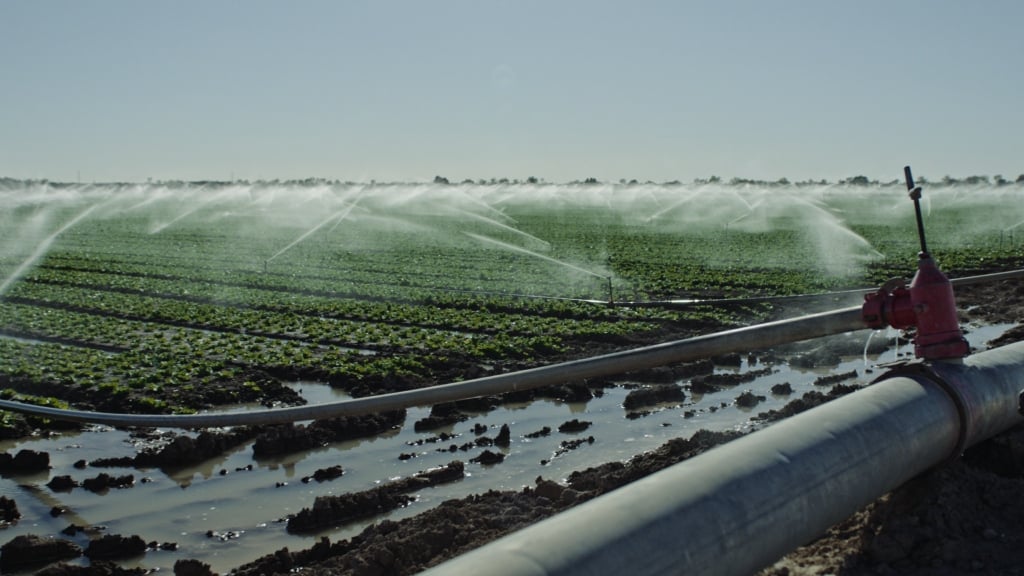
Netflix’s new food safety documentary Poisoned: The Dirty Truth About Your Food tells several tragic stories of people like Stephanie Ingberg, who fell gravely ill after eating everyday foods like a hamburger or a piece of lettuce.
The danger didn’t come from the food itself — it came from bacterial pathogens like E. coli and Salmonella that made their way from farm to table.
For Stephanie Ingberg, her whole life changed after eating a salad.
What Happened to Stephanie Ingberg?
The 17-year-old American high school student was at home in St. Louis, Missouri, getting ready to leave for a vacation with her parents when she started feeling sick. Her symptoms included gas and diarrhea, but initially, the family chalked it up to an upset stomach, her mother, Candie Ingberg, said in the Netflix documentary.
“We didn’t think anything of it at all,” Candie Ingberg said.
“When we got to the Dominican Republic and we were at the resort, she felt like she was feeling a little bit better. But throughout the night it progressed getting worse and worse. [That’s] when I realized we needed to get some help. It was an absolute nightmare of tests and doctors.”
“The next morning when they let me go in to see her, she didn’t recognize me. She was pulling at her hair… her kidneys had stopped functioning and she was having swelling of her brain.”
Stephanie’s father, Scott, arranged to have her airlifted from the Dominican Republic to St. Luke’s Hospital in St. Louis. It was there that doctors discovered that she had Shiga toxin, which is produced by the most dangerous strain of E. coli bacteria known as E. coli O157:H7.
“They said she might not make it through the night,” Scott Ingberg said. “A priest was there within a couple of hours to give her her last rights.”
Also Read: 9 Captivating Netflix True Crime Docuseries You Might Have Missed
“Stephanie’s condition rapidly deteriorated overnight. In a very critical condition, I think she had a few more hours to live, unfortunately. It’s a very scary situation where you have a perfectly healthy athletic 17-year-old female that goes on spring break and 48 hours later, she’s dying.”
After speaking with Stephanie’s friends to find out what she might have eaten that contained E. coli, they realized that it was from a salad made with contaminated lettuce.
According to the documentary’s findings, lettuces like romaine and spinach that are grown in close proximity to factory-farmed livestock pose the highest risk of E. coli contamination to American consumers. One way that E. coli can spread from cows to lettuce farms is when the animals’ fecal matter is washed into the irrigation canals that are then used to water the lettuce plants.

Did Stephanie Ingberg Survive?
Yes. Stephanie Ingberg ultimately came out of her coma and recovered from her illness, though she still deals with complications that affect her kidney function to this day.
“They were telling me that I got a stand of E. coli, and it can give you HUS [Hemolytic Uremic Syndrome], which is a fatal kidney disease, which is what I got,” Stephanie Ingberg says towards the end of the documentary.
Her doctor, Dr. Pablo Dayer, explained how the bacteria affected her internal organs.
“This condition in her body was like a nuclear bomb exploding inside you, where it hits every single organ and you have to get in there and pick up the pieces,” he says.
But despite being extremely weakened by her illness, Stephanie was determined to be able to walk at her high school graduation.
“It took me a long time to rebuild my strength. My coma kind of knocked me out for the hardest parts, but I know there were moments that my family and my doctors didn’t think I was gonna make it through, which has been really hard on them, and it’s hard for me to know that I put them through that pain,” she says.
“I had a lot of physical therapy, a handful of outpatient dialysis visits — I had doctors appointments every day,” she added.
“Being able to walk at graduation was one of my biggest goals because at the time I couldn’t walk.”
She ultimately reached her goal and walked with her classmates at her graduation.
Four years later, the worst parts of her healing journey are over — but she still takes medication for her kidney function like that on https://www.rxoneshop.com/about-us, and may one day need a kidney transplant.
“I might have to be on dialysis for the rest of my life. You never want to hear that,” she said through tears.
“I ate a salad, and now I have long-term health effects from it.”
What Can You Do to Avoid E. coli Contamination?
“If you were to develop a list of the highest-risk foods right now, romaine lettuce would be near the top, if not at the top,” John Kobayashi, M.D. and former Washington State epidemiologist says in the documentary.
A 2018 CDC warning advised U.S. consumers to avoid romaine lettuce entirely after an E. coli outbreak that sickened 32 people.
Other foods covered in the Netflix doc that consumers would be wise to be wary of are raw chicken, which may contain salmonella, undercooked ground beef, which may contain E. coli, cantaloupe, which is difficult to wash thoroughly, and raw seafood.
According to the CDC, the best way to wash leafy greens is by rinsing them under running water. Food safety lawyer Bill Marler recommends avoiding bagged lettuce altogether and suggests buying plastic-free, whole heads of lettuce instead and washing it yourself at home. He also recommends ordering your burgers cooked to 155 degrees Fahrenheit at restaurants.
Poisoned: The Truth About Your Food is now streaming on Netflix.
Main Image: Stephanie Ingberg pictured in Poisoned: The Truth About Your Food courtesy of Netflix.
